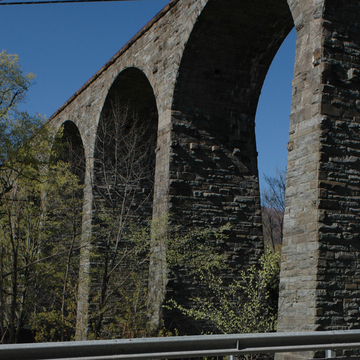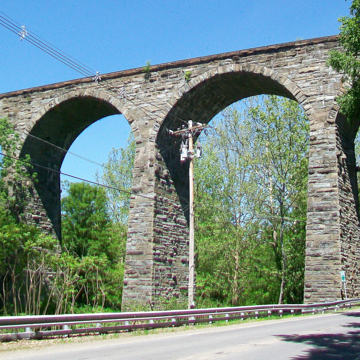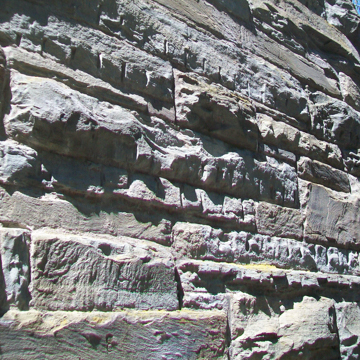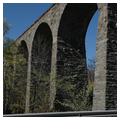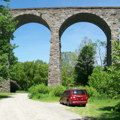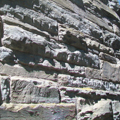Memorably depicted in an 1865 painting by Jasper Cropsey and considered the handsomest masonry bridge from the pre–Civil War era of railroad bridge construction, Starrucca Viaduct is an American civil engineering landmark. William McLeod, writing in the New York and Erie Railroad Guide (1851), compared it to a “huge centipede” putting “down its many feet across the Starrucca Vale.” Those “many feet” form seventeen arches, each 51 feet wide, which carry two railroad tracks 1,040 feet across the valley at a height of 110 feet. Facing a New York State–imposed two-year deadline but braced with heavy British investments, the Erie Railroad hired Scottish-born and educated James P. Kirkwood to see the project to its early and successful completion, though at an unprecedented expense. Kirkwood's achievement led to his promotion the next year to general superintendent of the railroad. The viaduct's graceful beauty rises from its slender piers and the use of random bluestone from quarries along Starrucca Creek. To appreciate the viaduct's durability compare it with the decay of the Erie's concrete bridge (1930) arching over Canawacta Creek and PA 92 at the southern end of Lanesboro.
You are here
Starrucca Viaduct
1847–1848, Julius W. Adams, engineer and probable designer; James P. Kirkwood, project engineer. Over Starrucca Creek at Main and Viaduct sts., Lanesboro
If SAH Archipedia has been useful to you, please consider supporting it.
SAH Archipedia tells the story of the United States through its buildings, landscapes, and cities. This freely available resource empowers the public with authoritative knowledge that deepens their understanding and appreciation of the built environment. But the Society of Architectural Historians, which created SAH Archipedia with University of Virginia Press, needs your support to maintain the high-caliber research, writing, photography, cartography, editing, design, and programming that make SAH Archipedia a trusted online resource available to all who value the history of place, heritage tourism, and learning.















